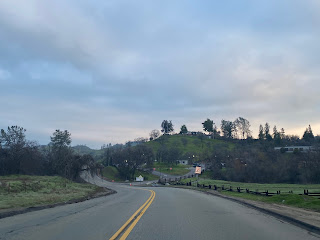Sky Harbour Road is an approximate six-mile highway in the Sierra Nevada Mountains foothills of northern Fresno County. Sky Harbour Road begins at Millerton Road at Table Mountain Rancheria. From Millerton Road, Sky Harbour Road follows the eastern shore of Millerton Lake to the South Finegold Picnic Area. The San Joaquin River Trail and Pincushion Peak Trail are both accessible from the South Finegold Picnic Area.
The South Finegold Picnic Area is part of the Millerton Lake State Recreation Area. The Millerton Lake State Recreation Area was formed as part of the completion of Friant Dam during 1944 along the San Joaquin River. Millerton Lake flooded over the original Fresno County seat of Millerton but opened up numerous recreational opportunities.
The Finegold Jeep Trail first appears on the 1965 United States Geological Survey Map of Millerton Lake and 1964 United States Geological Survey Map of Friant. The Finegold Jeep Trail originated at Table Mountain Rancheria at Millerton Road and connected the trailheads for the San Joaquin River Trail and Pincushion Peak Trail.
The Finegold Jeep Trail appears on the 1980 United States Geological Survey Maps of Millerton Lake and 1982 United States Geological Survey Map of Fresno as a paved road. It is unclear when the name Sky Harbour Road was designated but it likely was concurrent with the Finegold Jeep Trail being paved.
Sky Harbour Road northbound begins from Millerton Road at Table Mountain Rancheria near the entrance to Table Mountain Casino.
Northbound Sky Harbour Road begins with a climb through an excavated cut which emerges onto a bluff near the Table Mountain Rancheria tribal office.
Northbound Sky Harbour Road skirts the edge of the Millerton Lake State Recreation Area and passes by the southern trailhead of the Pincushion Peak Trail.
Sky Harbour Road passes through a series of lakeside homes and ends at the gate for the South Finegold Picnic Area.
Pincushion Peak is listed as 1.2 miles from the San Joaquin River Trailhead.
The San Joaquin River Trail gradually climbs to the unmarked north trailhead for the Pincushion Peak Trailhead. The right branch on the last photo below is the north trailhead towards Pincushion Peak.
From the San Joaquin River Trail, the trail up to Pincushion Peak is heavily inclined and gains approximately 500 feet in elevation in less than a half mile.
From Pincushion Peak there are unobstructed vistas of the San Joaquin River Gorge and Millerton Lake.

























































































Comments